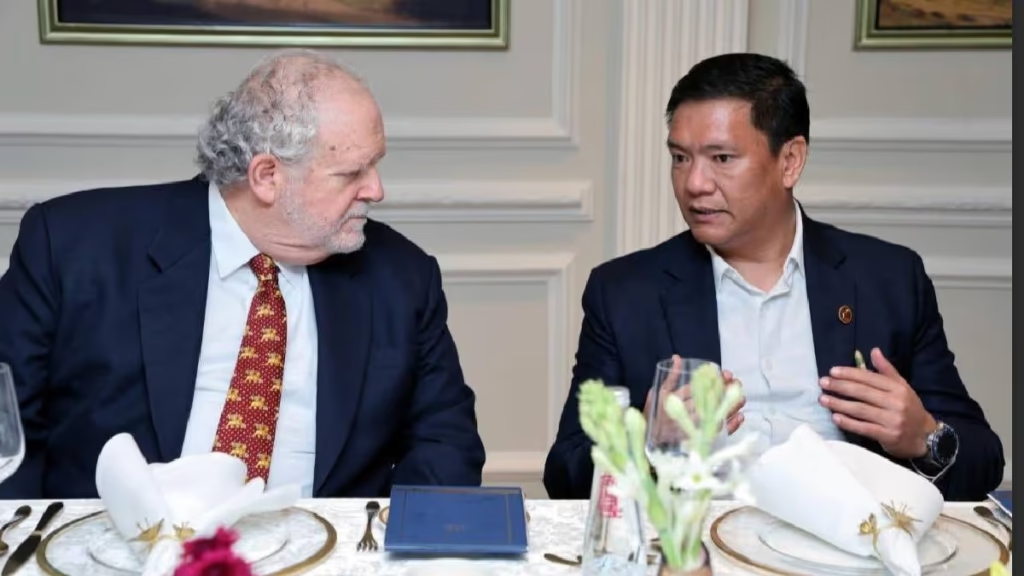Arunachal Pradesh Chief Minister Pema Khandu recently engaged with a U.S. delegation in a significant meeting aimed at exploring potential collaborations and initiatives that could drive growth and development in the northeastern state. This meeting marked a crucial step towards strengthening international partnerships and attracting investment into various sectors that have the potential to transform the region.
The discussion focused on identifying areas of mutual interest, particularly in infrastructure development, education, healthcare, and environmental sustainability. The Chief Minister emphasized the importance of bringing global expertise and investment into Arunachal Pradesh, which remains one of India’s most resource-rich yet underdeveloped states. With its abundant natural resources, including hydropower potential, and strategic location bordering China and Myanmar, Arunachal Pradesh holds significant promise for future economic growth.
The U.S. delegation, which included key representatives from government and private sectors, expressed interest in Arunachal Pradesh’s potential for growth in renewable energy, tourism, and sustainable agriculture. During the meeting, the delegation acknowledged the state’s unique geographical position, which could play a key role in regional connectivity and economic integration with Southeast Asia. They also highlighted the importance of strengthening trade ties and creating a conducive environment for investments.
Pema Khandu, in his address, welcomed the engagement and assured the delegation of the state government’s full cooperation in identifying and addressing areas that need collaboration. He mentioned that the state is looking forward to enhancing its infrastructure, including roads, airports, and communication networks, with the help of both domestic and international partners. Additionally, the Chief Minister stressed the significance of skill development and capacity building, particularly in sectors like technology and entrepreneurship, which can empower local communities and create jobs.
The meeting also delved into improving healthcare access for Arunachal Pradesh’s rural population. The Chief Minister noted that while the state has made significant strides in healthcare, there is still a pressing need for more advanced medical infrastructure, particularly in remote areas. Both sides discussed potential partnerships in the healthcare sector, ranging from telemedicine services to establishing medical research and training centers, which could benefit not just Arunachal Pradesh, but other northeastern states as well.
Education emerged as another key topic of discussion, with the U.S. delegation expressing interest in collaborating with the state to improve the quality of education, particularly in higher education and vocational training. Arunachal Pradesh, like many other parts of India, faces challenges in providing world-class education to its youth. By working with international partners, the state hopes to bring best practices in pedagogy, curriculum design, and technology integration to its schools and universities.
Environmental sustainability was also a focal point of the meeting. Arunachal Pradesh is known for its rich biodiversity and pristine forests, which are facing increasing threats from climate change and development activities. The Chief Minister discussed potential collaborations aimed at protecting the state’s natural heritage while promoting sustainable development practices. The U.S. delegation was particularly interested in joint research projects on climate change, as well as investments in green technologies and renewable energy initiatives that could benefit both Arunachal Pradesh and the wider region.
The state government also plans to leverage these collaborations to boost tourism, a sector that holds immense potential for Arunachal Pradesh. With its stunning landscapes, rich cultural heritage, and diverse indigenous communities, the state has become an increasingly popular destination for both domestic and international tourists. However, to truly capitalize on this potential, the state requires enhanced infrastructure, better marketing strategies, and more investment in hospitality services. Discussions during the meeting touched upon ways to boost eco-tourism and cultural tourism while ensuring the preservation of the state’s unique traditions and natural beauty.


